#hanfu recreation
Text




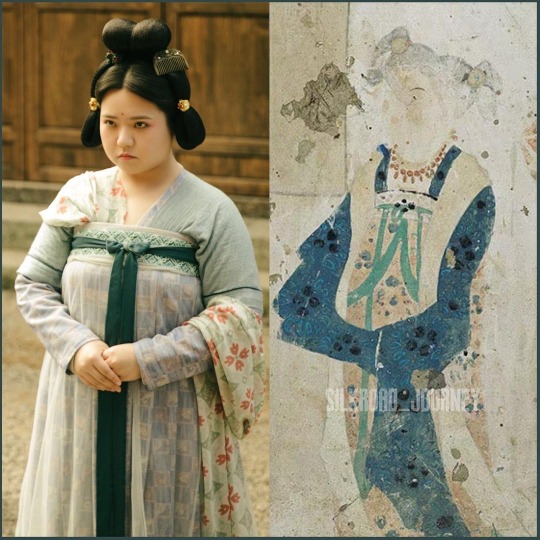

Tang dynasty period drama (Luoyang 风起洛阳) 2021
Vast majority of the C-drama costumes are restored based on real Tang dynasty paintings from the Mogao Caves. These are some examples.
Photos credit: silkroad_journey on Instagram.
#chinese history#chinese culture#hanfu#tang dynasty#Buddhism#mogao caves#China#silk road#ancient china#Medieval China#chinese drama#cdrama#hanfu recreation#Hanfu restoration#dynastic china#art
225 notes
·
View notes
Text
[Hanfu · 漢服]Chinese Ming Dynasty(1368-1644 AD) Hanfu Based On Ming Dynasty Portrait
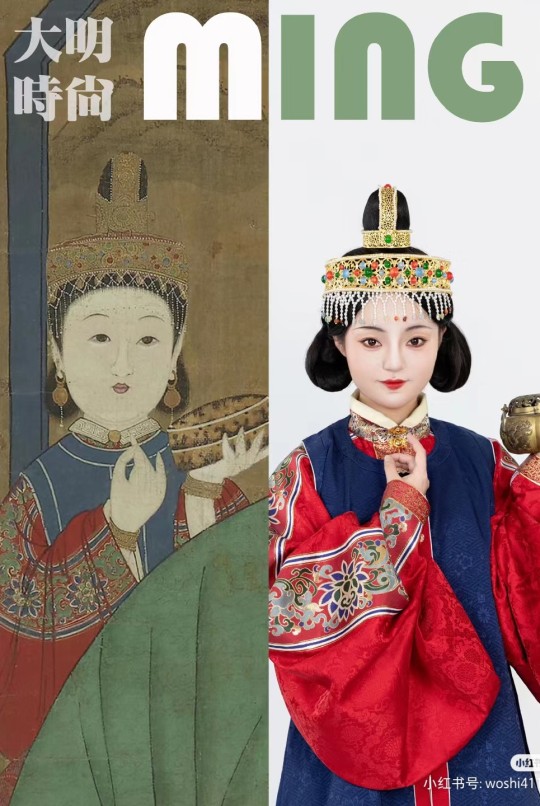





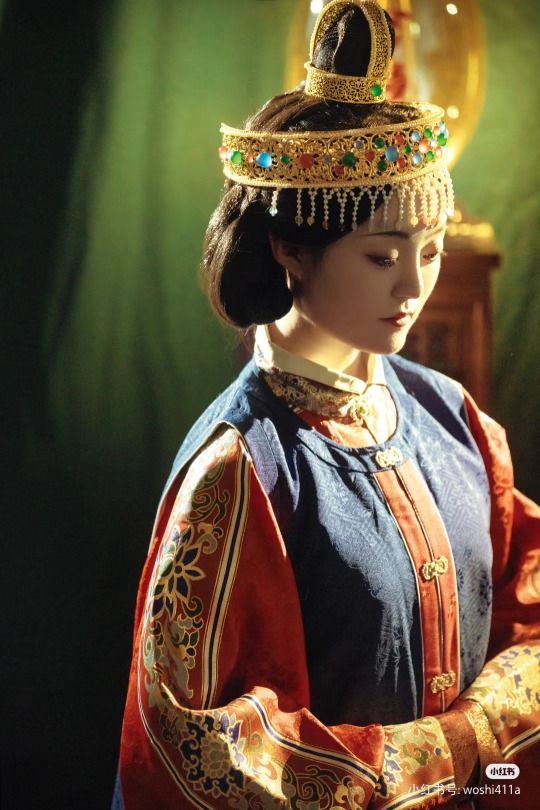

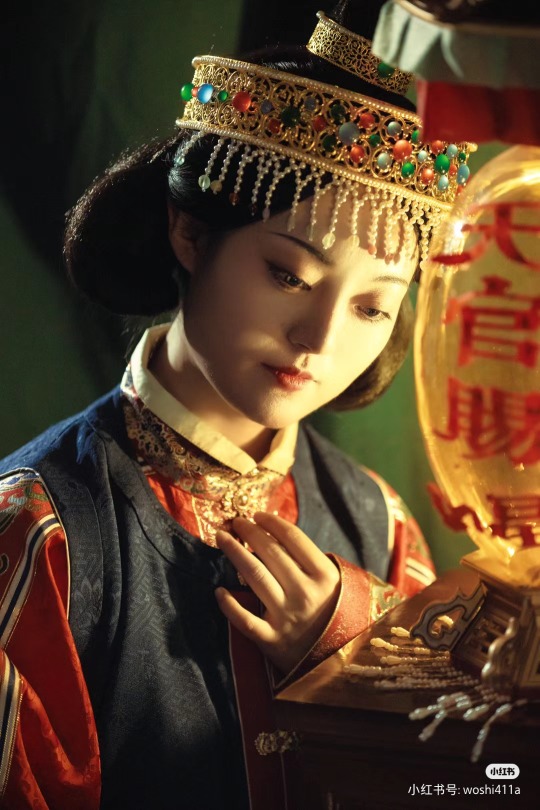
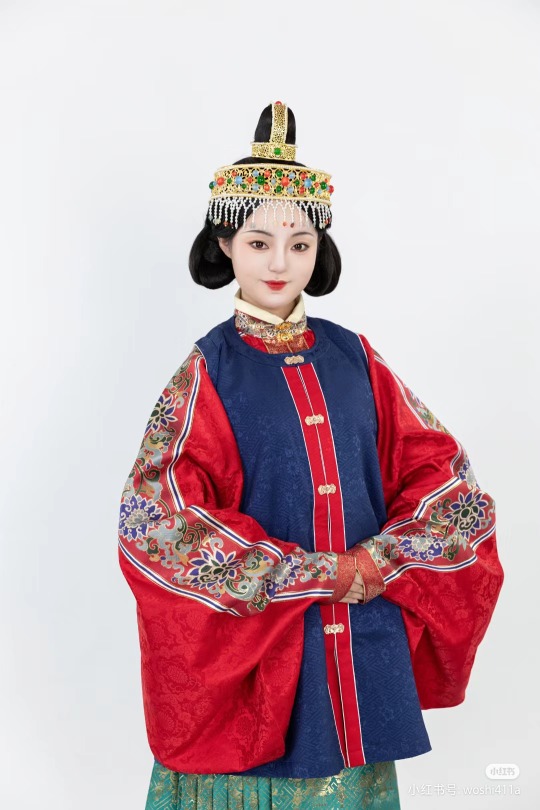



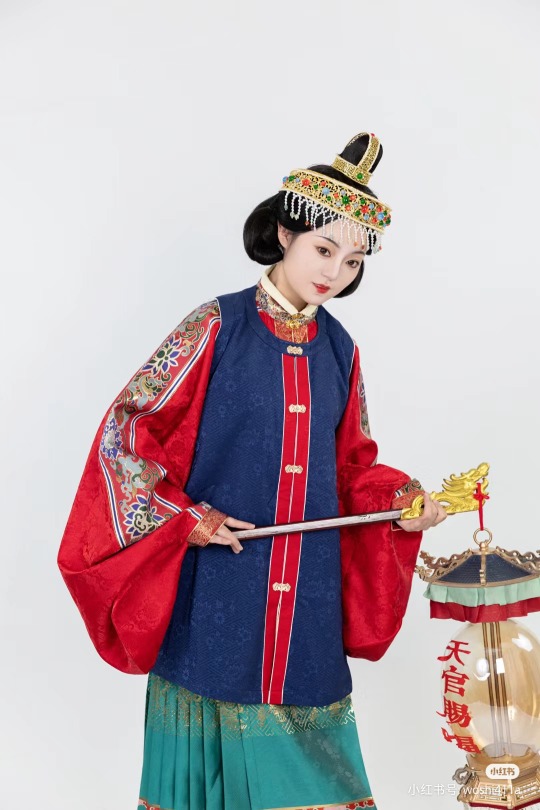



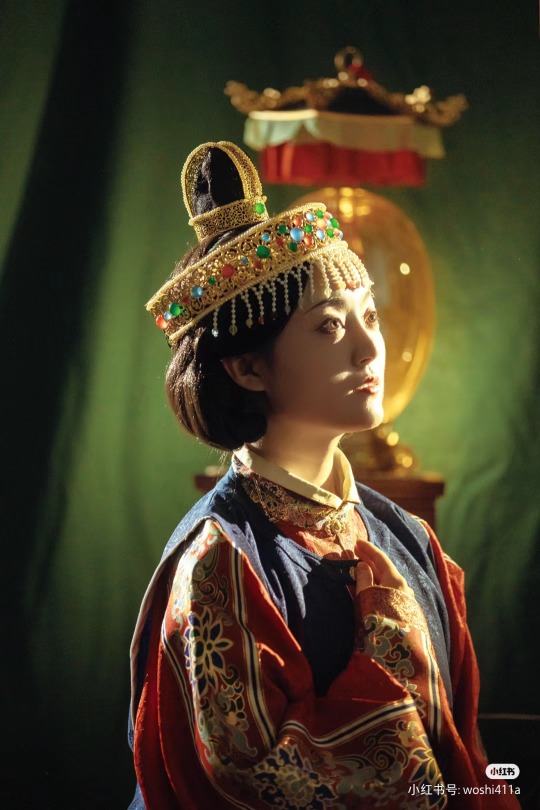
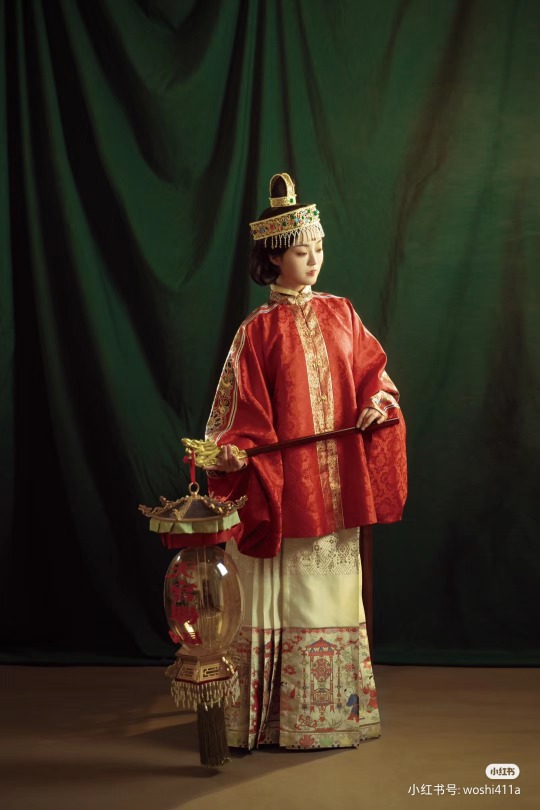
【Historical Reference Artifacts】:
• China Ming Dynatsy Couple portrait:The maid in the《父济氏和母赵氏画像/Portrait of father Ji and mother Zhao portrait》

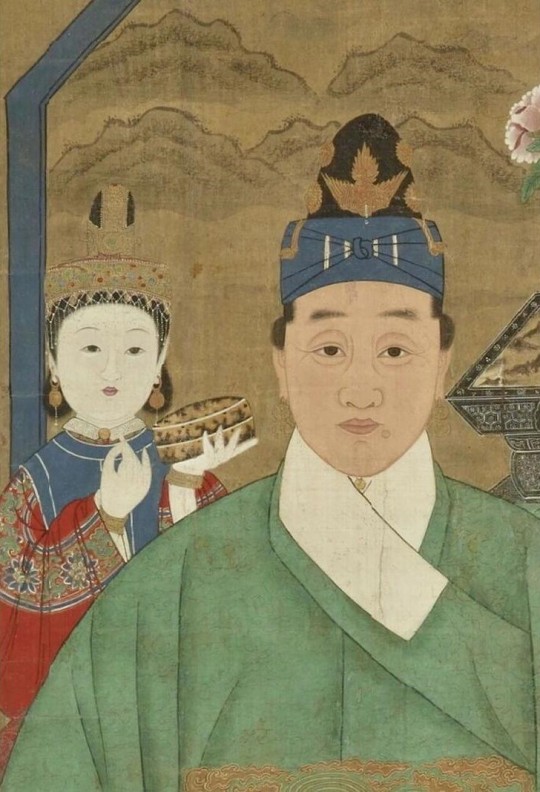
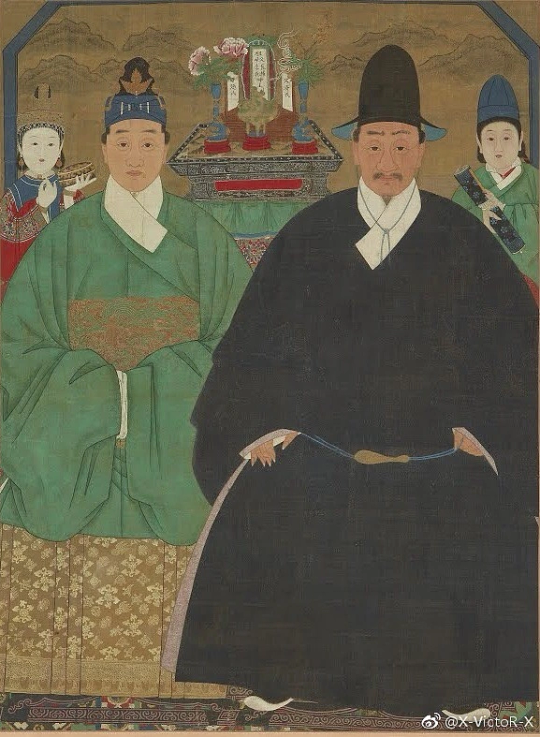
————————
📸Recreation Work &🧚🏻 Model :@我是411
👗Hanfu:@公卿传统服饰
🔗 Xiaohongshu App:http://xhslink.com/8xNMOw
————————
#chinese hanfu#Ming Dynasty(1368-1644 AD)#hanfu#hanfu accessories#chinese traditional clothing#hanfu_challenge#chinese#china#hanfu history#hanfu girl#china history#hanfu recreation#historical fashion#historical hairstyle#漢服#汉服#中華風#中国#mamianqun
143 notes
·
View notes
Note
Hi! I have a question. Im not entirely sure if these belong to chinese fashion because I only ever saw them in uncredited pictures. Theyre very intricate "eye patches", seemingly made from like gold or metal? they cover only one eye and I was wondering if they have a name or if its something made up? thank you for all your work!
Hi, thanks for the question, and sorry for taking ages to reply! (x)
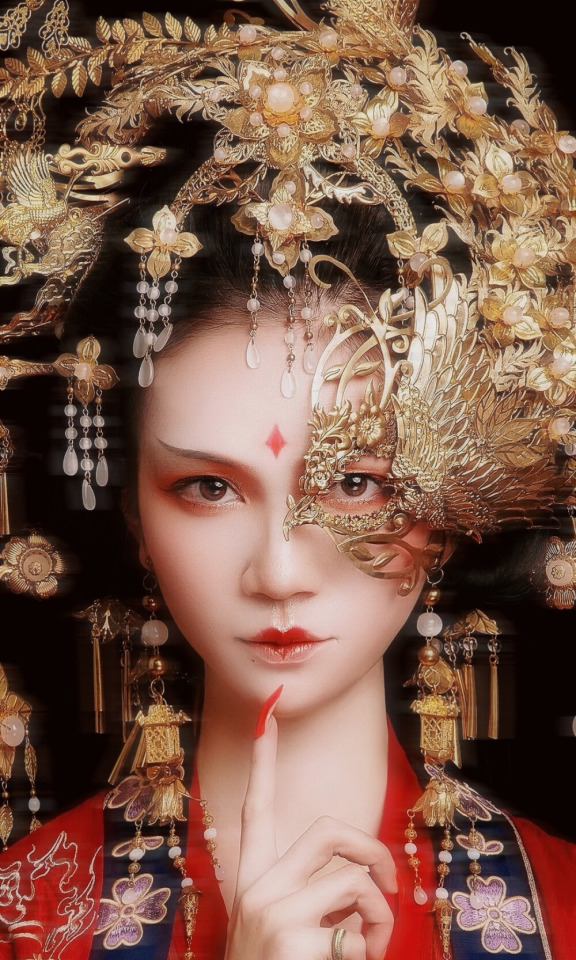
The intricate gold/metal "eye patches" covering only one eye that you see are most likely based on "半面妆/Ban Mian Zhuang" ("Half Face Makeup"), a popular Chinese novel written by 萧十一狼/Xiao Shi Yi Lang and published in 2015. Well-known Chinese gufeng-style illustrator 古戈力/Gu Ge Li provided beautiful artwork for the novel, as seen below (1, 2):
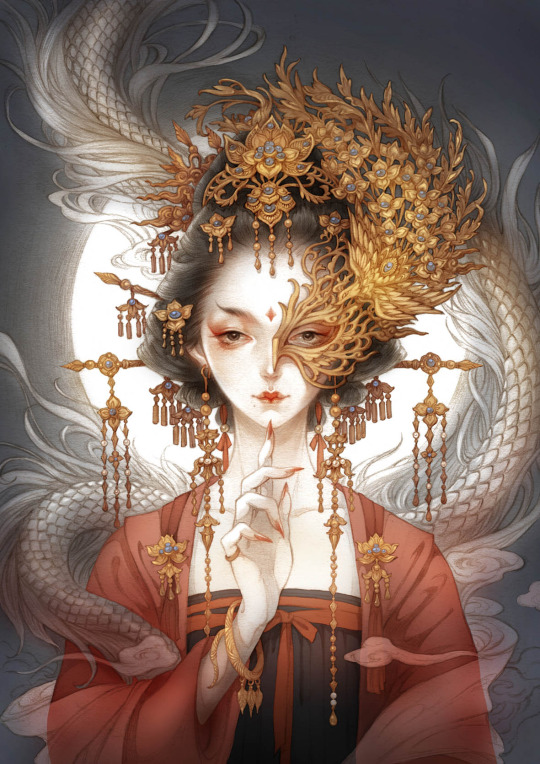
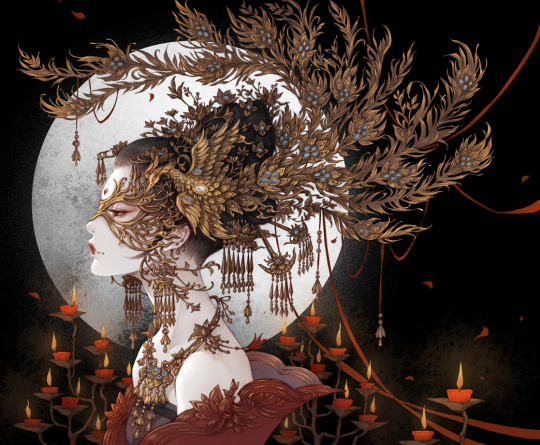
Gu Ge Li's artwork inspired many hanfu photoshoots with ornate eyemasks (1, 2, 3, 4, 5):
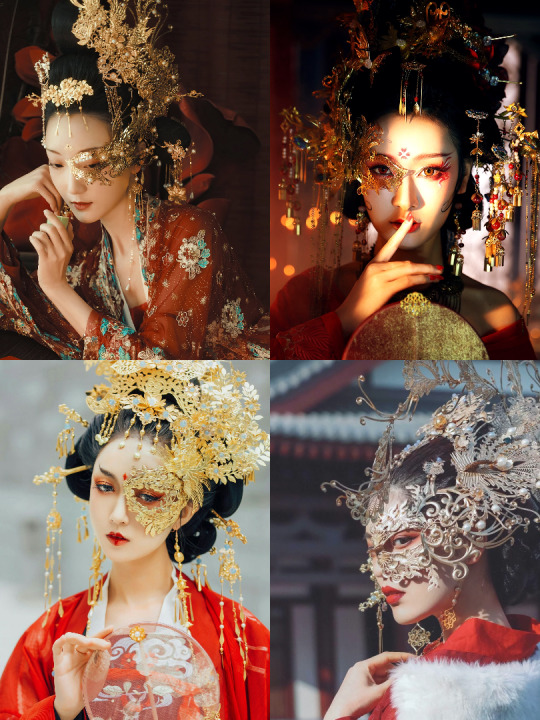

These eyemasks are essentially made-up fantasy masks with Chinese elements incorporated into the design. They are not based on historical Chinese masks, which look very different. Thus you can just call them 面具/mianju, which is the general Chinese term for masks.
On a related note, similar types of fantasy masks also appear frequently in Chinese guzhuang (period costume) films & dramas, especially in the wuxia and xianxia genres. As @audreydoeskaren touched on in this post, these masks are typically not historically accurate, but are included for aesthetic effect (like many other elements in guzhuang media).
Below - fantasy masks in Chinese film/dramas. Clockwise from top left: women - Painted Skin: The Resurrection, Legend of Nine Tails Fox, The Empress of China, The Blue Whisper; men - Love and Redemption, Xuan-Yuan Sword: Scar of Sky, The Untamed, Battle Through the Heavens:

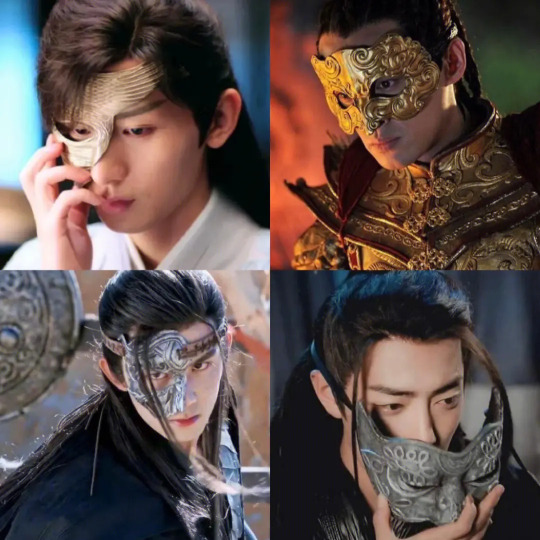
Deriving inspiration from art and television, fantasy masks have become a popular accessory for hanfu photoshoots.
For more examples of Chinese masks (both historical & fantasy), please see my masks and eyemask tags.
Hope this helps! ^^
#eyemask#masks#hanfu accessories#hanfu#半面妆#banmianzhuang#古戈力#gugeli#art#gufeng#cosplay#recreation#guzhuang#drama costumes#drama#>100#reference#ask#reply#chinese fashion#chinese clothing#china
475 notes
·
View notes
Photo




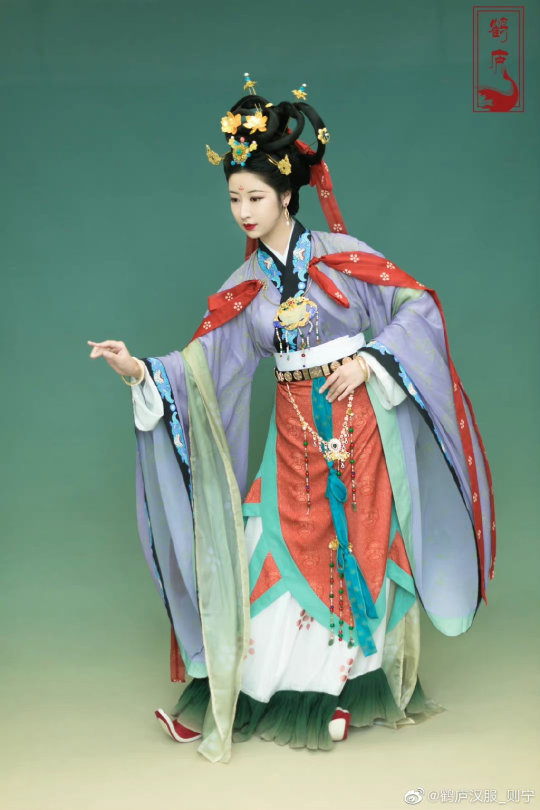




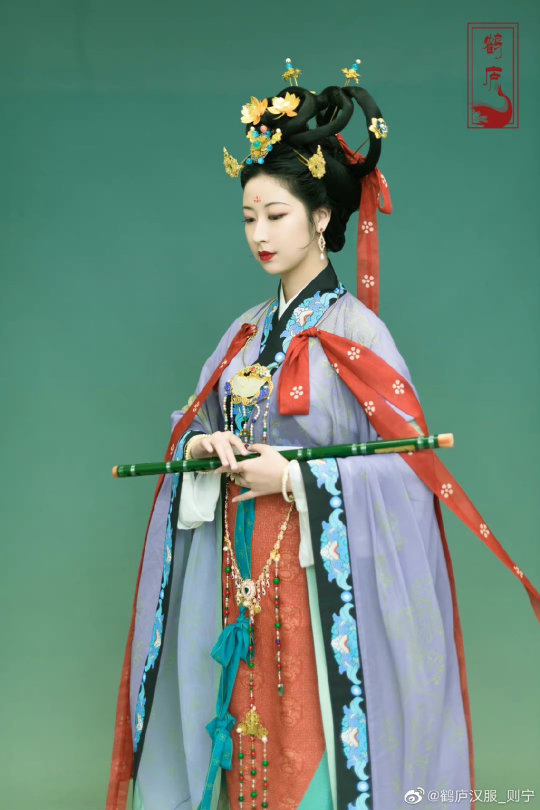
chinese hanfu by 鹤庐汉服
337 notes
·
View notes
Text
Art Help

I redid this list because broken links 💀
General Tips
Stretch your fingers and hands
Art is for fun
Never too late to start/improve
Tumblr radar! Submit your work!?
Using a tablet
Editing software: pictures & video
Moodboard resources
Comic pacing
Storyboarding techniques
Watercolor
Coloring
Color Theory (not children's hospital)
Gemstone reference
Resources: coloring things a different color
Gold
Dark Skin undertones
Dark Skin in pastel art
POC Blush tones
Eyes colors
Cohesive Color Palette
Lights and Colors
Human Anatomy
POSE REFERENCES
Eyes: pupil shape, direction
Wizard Battle poses
Romance poses
Shoulders
Tips for practicing anatomy
Proportional Limbs
Skeletons
Hair Directions
Afro, 4C hair
Cane use
Dingle dongles: male reproductive
Clothing
Long skirts
Traditional Chinese Hanfu (clothing reference)
Cultural clothes
CLOTHING REFERENCE
Medieval armor
Sewing information
Animals
Horse -> Dragon
Snouts: dogs, cats, wolves, fox
Foot, paw, hoof
Plants
Blossoms: cherry, plum, apricot, etc
Plants/flowers: North America, Hawaii, Patagonia
More
Drawing references sources
More references: floorplanner, height & weight, expressions, hands, animals, sculpting tool
Art tutorial Masterlist
Another art tutorial Masterlist
Inspiration: father recreates son's art
Inspiration: Lights
ART BOOKS
Art Cheats
#art tips#art tutorial#art references#pose reference#art masterlist#clothing art#art clothing#digital art#watercolor#poc#art
41K notes
·
View notes
Text
So I was inspired by @sinn-bee and their dragon AU to recreate their Shen Yuan and Liu Qingge's dragon forms. I'm totally in love with this AU and I thought it would be fun to compare how I designed based on their art vs what I did for the canon character's in SVSSS.

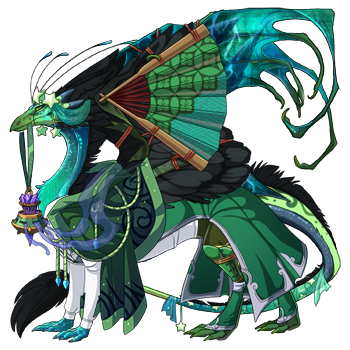
On the left is the design I did off their design and the right is based on the canon one. I went with a Veilspun for Sinn's design because the horn shape is probably the most similar to the one's on SY, plus the hair on them is such a big aspect of them. It's a little funny that I made him a Veilspun because in Flight Rising canon Veilspun are the smallest dragon's, about the size of a cat, whilst Sinn!SY is a big boy. I made a point to make him Mint because SY's color change is the biggest indicator in their AU that Shen Jiu was replaced. I thought filigree would be a good touch to reference the bracers that are a focal point on SY's clothing.
Canon SY I focused mostly on elegance and a wind theme, so I went with a Skydancer. The outfit was the most complicated thing, mostly because there aren't any specifically Chinese hanfu in the game. I had to do a lot of layering.


Once again, Sinn's design is on the left and the one based on canon is on the right. Liu Qingge was easy to decide on a breed because of his antler shaped horns! I had to go with an Imperial, which are based on both Asian mythology and the largest breed in the game with my largest one the length of an eleven story building. I wanted to focus on making Sinn!LQG as delicate and beautiful looking as possible. I thought the silver Opal really gave him a cool natural look. I think he and Sinn!SY would look beautiful together.
My canon version was focused mostly on his meat head fighter side, but I couldn't resist giving him a cute skin designed by FR user larkhund. I love the gap moe of it. I'm not completely happy with the outfit, but I think it works.
I hope you like it Sinn, I'm so excited to see more of your art. Keep it up!
59 notes
·
View notes
Text

(click photo for better quality)
@cats-and-confusion
Yo!!! Y'know that one character sheet of puppycat and his crew as the space outlaws? Yea I tried to recreate that with this silly gang.
I'm personally quite happy with how these designs turned out (though Tripitaka is still Tripitaka but just small-) I added cloud buttons to the hanfu and like shoulder paldrons or something to make it look more like a captain's coat.
I also noticed the moon and stars motif on puppycat and decided to replace that with suns and clouds. Including the ring. I hope the scarf looks cool and not too dorky.
With Macaque, I pretty much just took off his sleeves shoes and put clouds on his pants as well as the lantern around his belt. His six ears are a nice substitute for Violet's wings though
The flowers are inspired after peach blossoms and warmer colour scheme like wukong's. (I also noticed the yellow outlines on the original flowers so I gave these a blue outline)
So yeah, Tripitaka is now the smart inventor kid of the crew and in this au he and Mac get on quite well. I imagine he's a combo of a tech genius and also like magic genius I guess? Explains how he made MK anyway...
Oh yeah! He also plays the role of Mk's dad here with his magic juju and stuff...
I know there's a small cat and fish guy on the og crew but I can't really think of anyone who can fit their roles so maybe three is best
please feel free to ask me or @cats-and-confusion about this silly au! I'm having way to much fun with it and have lots of ideas and pictures lined up in the future!
We should also really come up with a name for this au, huh?
reblogs > likes
(but any feedback is appreciated!)
#art#pog champ#lmk#lego monkie kid#bee and puppycat#my beloved#Py's_art#fanart#bee and puppycat au#lmk au#lmk macaque#lmk wukong#lmk tripitaka#lmk shadowpeach#does this even count as shadowpeach shipping?#well they are a thing in this au so...#pls notice#I really like their designs#shenanigans in space
89 notes
·
View notes
Text
Current bingqiu nendo plans:
- for now my priority is stabilization, so I just bought them tiny cowboy boots for obvious reasons.
- as for clothes, I'll probably try my best to recreate the San Fen modern Bingqiu hanfu designs from the collab they had a few years ago. Though if I can find their full sets of canon clothes for cheaper I'll go for those obv

- ordering horse tack will probably be a few paychecks out lol , but I'll probably end up commissioning a professional mini tack craftsman for dressage set for sqq and then will likely order a custom western tack diy kit for binghe
76 notes
·
View notes
Text
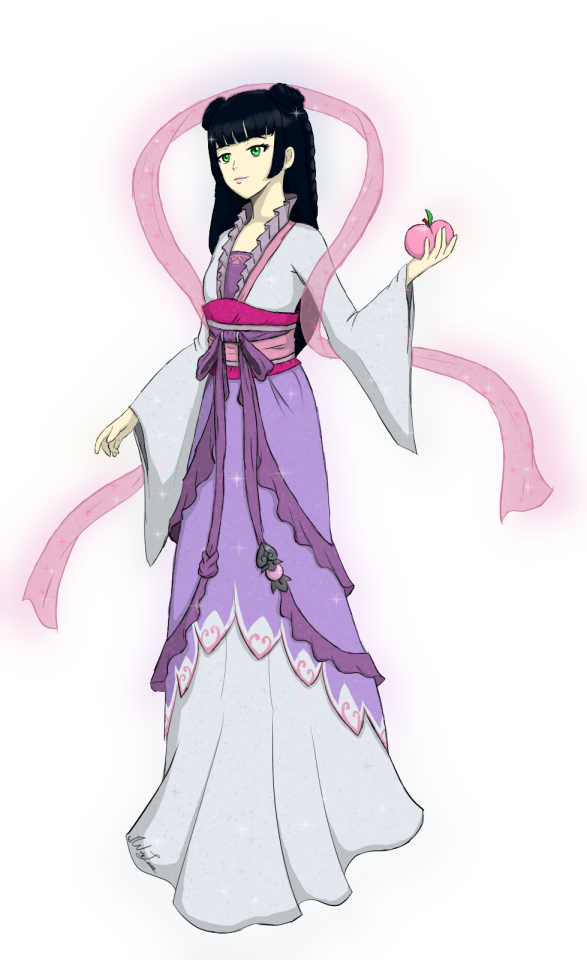

When looking at the LMK sets for references I saw a minifigure of a Heaven Fairy and wanted to recreate it in my style. I absolutely love the hanfu design on this minifiure, shame it never made it into the show.
52 notes
·
View notes
Text
Rare Portraits Depicting Hanfu Worn with Right Over Left Lapel Closing (左衽).

Thirteenth Ancestor Portrait from Portrait Album of Wu’s Ancestors 吳氏先祖容像十三. Ni Renji. Painted sometime between the late Ming Dynasty and early Qing Dynasty during the artist’s life (1607-1685). Yiwu Museum, Zhejiang, China [image source].
For the Han, the left lapel was considered Yang and the right one Yin and, thus, living people placed the left lapel over the right one to symbolize Yang (life) covering Yin (death). That’s why only dead people had their right lapel over their left. In the case of the dead, Yin (death; right lapel) overtook Yang (life; left lapel). Moreover, the left over right lapel (右衽) served as an ethnic distinction for the Han.
However, not all living Han people followed this tradition and there are documented cases of them wearing their hanfu with the right lapel over the left one.
There are exceptions in which living Han Chinese would wear clothing with a zuoren closure. For example, in some areas (such as Northern Hebei) in the 10th century, some ethnic Han Chinese could be found wearing left-lapel clothing. It was also common for the Han Chinese women to adopt left lapel under the reign of foreign nationalities, such as in the such as in the Yuan dynasty. The practice of wearing the zuoren also continued in some areas of the Ming dynasty despite being a Han Chinese-ruled dynasty which is an atypical feature.
Wikipedia, Garment collars in Hanfu
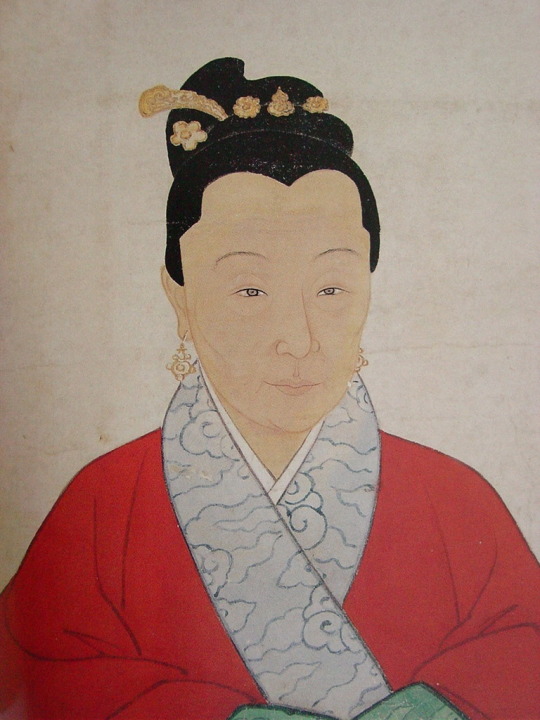
Fifth Ancestor Portrait from Portrait Album of Wu’s Ancestors 吳氏先祖容像五. Ni Renji. Painted sometime between the late Ming Dynasty and early Qing Dynasty during the artist’s life (1607-1685). Yiwu Museum, Zhejiang, China [image source].
Other non-Han ethnicities, such as the Khitans and Xianbei, would preserve their 左衽 tradition even after adopting hanfu. It’s possible for these women (and its mostly women wearing hanfu depicted with 左衽) to be non-Han in origin or are Han but came from areas where 左衽 was still practiced due to non-Han ethnic influence. I remember reading somewhere that, South of the Yangtze, certain Han women wore their hanfu in both styles.
Since almost all of the portraits below are ancestor portraits and there are plenty of those where the women and men wear 右衽 despite being dead at the time of painting, it’s unlikely that the 左衽 depicted is meant to indicate that the woman is dead.
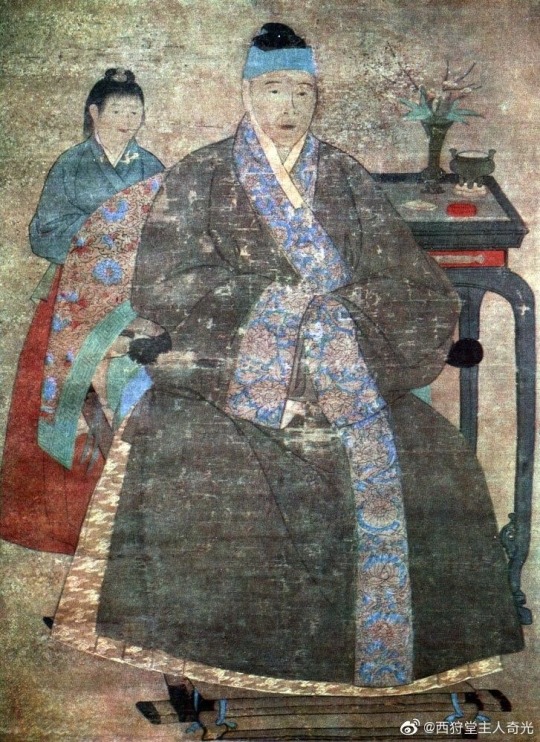
Portrait of the wife of a dignitary with maid by Chow Ying. Scroll. Painting on silk. 16th century. Moscow State Museum of Oriental Art [image source].

Portrait of Father Zhang Jimin and Mother Zhao. Unknown artist. Ming or Qing dynasty, Late Ming or early Qing dynasty (17th century or later). Hanging scroll. Ink and colors on silk. Arthur M. Sackler Gallery. National Museum of Asian Art, Smithsonian Institution [image source].

Ancestor Portrait of a Court Lady. Possibly Ming Dynasty. Unknown artist. Hanging scroll (laid down on panel), ink and color on silk. The Nelson-Atkins Museum of Art [image source].
Notice how, even the maid in the background above, has 左衽.

Possible Portrait of Ancestor with maid. Unknown Artist. Possibly Ming Dynasty [image source].
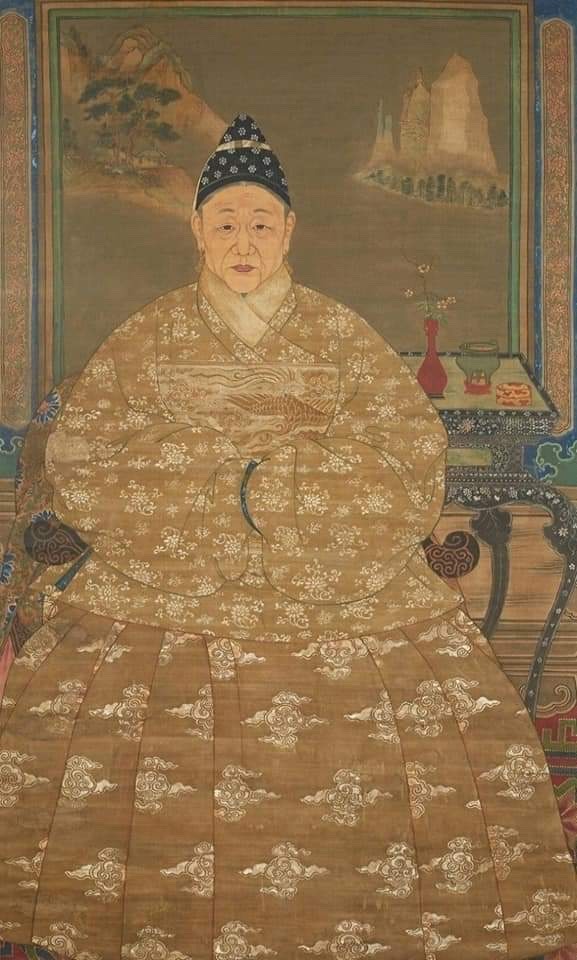
Ancestor Portrait. Unknown artist. Late 19th century. Qing Dynasty. Auguttes Auction House. [image source].
Note: Be careful when dating ancestor portraits. Many were painted posthumously and could depict ancestors from multiple previous generations. Just because the figures are seen wearing a dynasty’s distinctive clothing, does not necessarily mean that it was painted then. Some Qing Dynasty ancestor portraits depict ancestors from the Ming Dynasty and, thus, artists painted the figures with Ming clothing.
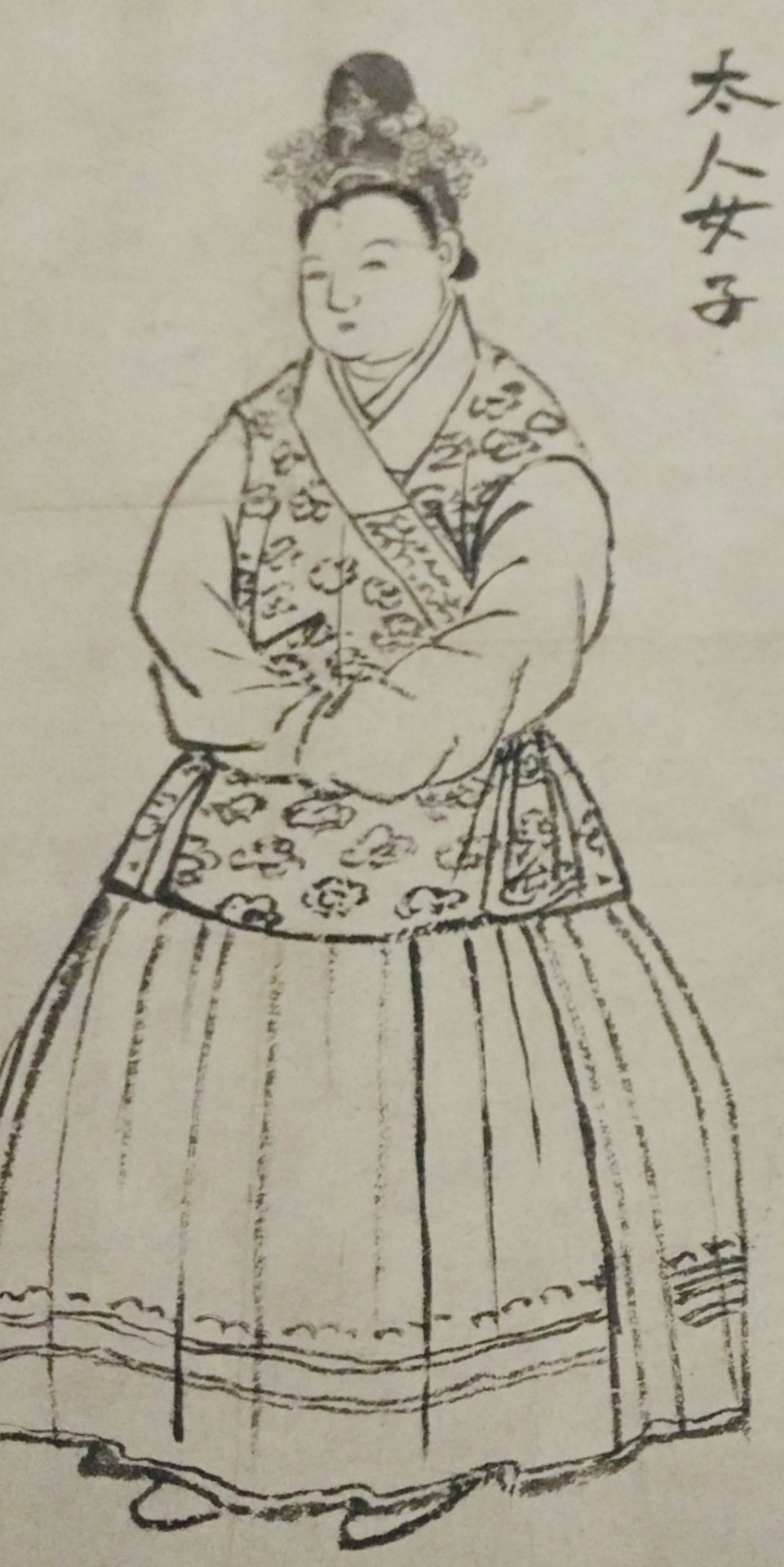

Images portraying hanfu in the Ming Dynasty with 左衽 drawn by Sesshu Toyo (1420 - 1506 CE), a Japanese monk who visited China between 1467 to 1469. Ink on paper [image source].
More portraits with 左衽 and modern recreation:
#chinese history#chinese culture#ming dynasty#ancestor portraits#右左衽#hanfu#ming paintings#ming portraits
128 notes
·
View notes
Text
How I Added More Appeal to My Worldbuilding

So, I was checking my Tumblr drafts and looking for the post where I had started my ideation on my Saegenfolk and apparently, that post has been lost to the ether. Which is sad -- it was a really good post, going through the worldbuilding process in real-time. But THAT'S OK: We'll recreate it now using my Saegen culture as an example!
So, imagine you're looking at your worldbuilding but you're just NOT FEELING it. To fix that...
Step 0: Gather all your worldbuilding into one place!
This will help you review it to identify it for problems. Now, for me, the Saegen were actually a whole worldbuilding project for another ice-world with an upper and lower continent and stuff. I'd even written a a whole codex of laws and an etiquette handbook... but here's the shortlist of all the old Saegen cultural info:
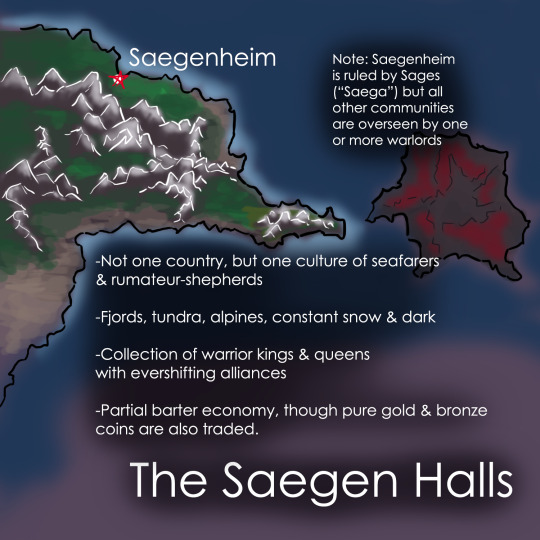





NOW: You must begin by identifying WHY you feel lasseiz faire about your Worldbuilding!
For me, when I was looking at my worldbuilding around the Saegen folk, it felt like they didn't have the polish and the cultural fusional elements that my other cultures had. For example, the Nouveau Thuilleans, for example, have a Franco-Irish aesthetic with Japanese and Sakha elements and a mafia-like government structure. That's a lot of disparate elements coming together to make a culture with its own unique flavor. But the Saegen folk were basically... just Vikings.
At first, I tried to just redesign their fashion. And I mean... here's the barely-redesigned fashion. The main difference here is that they have a more Hanfu-style undershirt. But. This was not the actual problem so it didn't really work to solve my problem

Add on top of that: I've been increasingly learning a lot of Viking-adjacent, Ancient Norse history has been misunderstood and/or co-opted by Neo-N*zis and it's just a lot more work to make them more authentic representation while dodging accidental dogwhistles than I think it would be worth.
The other issue I had was that their culture was not reflective of the environment enough... Especially since I had screwed up on continent placement and descriptions -- I was writing them as if their whole society DIDN'T live underground with very limited sunlight every day. Whoops!
So this brings us to STEP 2: Review your design objectives.
With creative works, it's really easy to just change things to be different without knowing if it's better or worse. Like, whether you think the new Zelda games are good or bad depends on if you think freedom in games is good or bad. If it's bad, then the new Zelda is bad, right? (I don't think this -- I think they're good and different. But not necessarily BETTER games: just literally different games.)
The way to ensure things are getting BETTER in your worldbuilding is by having objectives or pillars for your work! With pillars, the more your work aligns with the pillars, the better you know it's getting.
For my worldbuilding generally, my #1 goal is that I, personally, should want to make characters for each of my cultures AND they should be distinct from other, to allow me to make the widest diversity of interesting characters.
And the Saegen culture was failing this because "just Vikings" doesn't interest or resonate with me anymore. But I DO like Norse culture and Norse landscapes and Celtic music and other Northern European things like that! But not unchanged for my fantasy world...
So now, STEP 3: Brainstorm changes to the worldbuilding to bring it in line with your design pillars!
I wanted to keep their focus on families and the hyperindividualism that pervades Northern cultures, because I think that makes them a good thematic foil to Nouveau Thuille. And I also wanted to keep their sailing, conlang, and music -- because I'm a huge fan of what my music friends have done with their music.
What did I add? I decided, since Nouveau Thuille had Japanese elements, Saegen culture should have Chinese elements! Plus, I'm a Chinese adoptee with very little knowledge or ties to my birth culture and I've wanted to make a concerted effort to learn more about it. Of course, this required a lot more research BUT I was motivated to do it...
I also began to consider the geography of the North and how the worldbuilding would need to reflect that. They live in an alpine tundra just shy of the North Pole of my world. I mean, here's a sketchy map that shows where their Capital is:
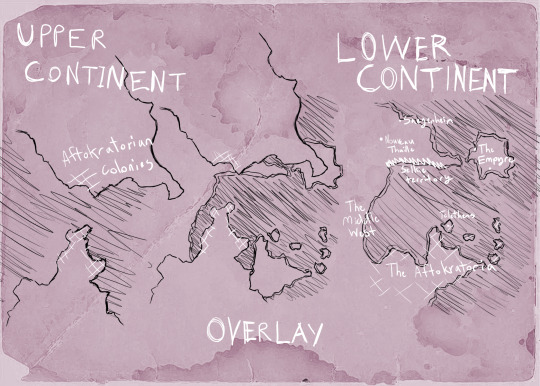
See how that's smack beneath the Upper Continent AND in the far north? It's fucking COLD. How are they getting food? Staying warm? Drinking water? I'll have to really revamp the ecology of the area to be as cool as the Black Gothic plants of the Nouveau Thuillean valley and as resonant as the cities I've made in the South while still make sense.
Also, since personal appeal is important goal, I also looked at things I was excited about at the time. And you know what was exciting me when I started working on the rewrite? Fontaine from Genshin Impact -- and their upper city-lower city dynamic, high crime rates, water associations...
I was even outlining a whole novel thing called "The Sunken City" and, what if I just tied that into the revamped Saegenheim? I had no interesting things happening there so I COULD set the novel there...
And this made me realize that Saegenheim should be a relatively vertical city underground, near some sort of thermal heat -- as this solves both my ecology problem AND my personal appeal problem. Like... when I think about an underground and partly-underwater city with viking houses and crime problems, I just 😍😍😍
Step 4: Research
Before I got too deep down the rabbit hole of making changes, I wanted to do more research because my knowledge of Chinese culture begins and ends with my Chinese school in 2nd grade. (Okay, that's not fair -- I ALSO learned about all the Dynasties in World History class). I wanted to have MUCH MORE knowledge, so I began to watch a bunch of YouTube videos on Chinese culture -- both historically and today.
And some of the things that really resonated with me were:
The changing traditions of snowy cities in the North of China
Their various concepts of masculinity and how it's changing today
The hyperindividualism seen in modern China compared with the community focus indicated by philosophers and architecture of the past
The evolution of Chinese fashion
The stories behind all the festivals
Color significance
The importance of numbers and their own astrology system
The way the Chinese government interacts with itself and the outside world
I wanna try to capture some of those elements in my work, though obviously, I have much much more to learn. But like... it's really cool to learn about this stuff -- to get a glimpse into the kind of person I might have been if I'd grown up in a different culture.
And then STEP 5 is to JUST DO IT -- which you can see I started doing in this post here!
That's all for today!
#worldbuilding#how to worldbuild#fantasy worldbuilding#fantasy writer#fantasy world#writeblr#writing#writing tips#creative writing#on writing#art process#writing process#yssaia#amaiguri
9 notes
·
View notes
Note
Hello I’m a little(read literally shaking from excitement) because like I as looking at different hanfu that would be my wifey inspired outfit and I settled on a ming dynasty one
Now I wanted to get some fake coins for my wifey mora pouch and while it would be nice to have some actual recreation mora its not doable for my budget. So instead i decided to get some recreation coins(they’re a lot cheaper because a lot of costume studios have a shit ton of recreation coins from different dynasty ready stock due to china’s love for it’s historical dramas so the price I pay for 50 coins(the max the shop allows me to buy in one checkout) is only about 20 ish mora? So yeah recreation coins) I searched up what dynasty was liyue inspired by and here’s the part that made me really really fucking happy
Liyue was inspired by the Qing dynasty. And you know what the dynasty before qing? The Ming dynasty roughly 200 years apart. So my wifey outfit has unintentional historical accuracy!
I am literally buzzing with excitement(?) joy(?) IDK WHAT TO CALL BUT I AM SHAKING WITH THIS REVELATION.
Also due to practical reasons I decided to get the hanfu in colours I like instead of wifey colours cause I don’t like owning one off outfits
LETS FUCKING GOOOOOOOOOO!!!!!
Also like I’m still reeling from you? Making a wifey inspired fit? I can’t be normal about that. That’s so??????? Aasdaghgdthddhjkjl I can’t
2 notes
·
View notes
Text
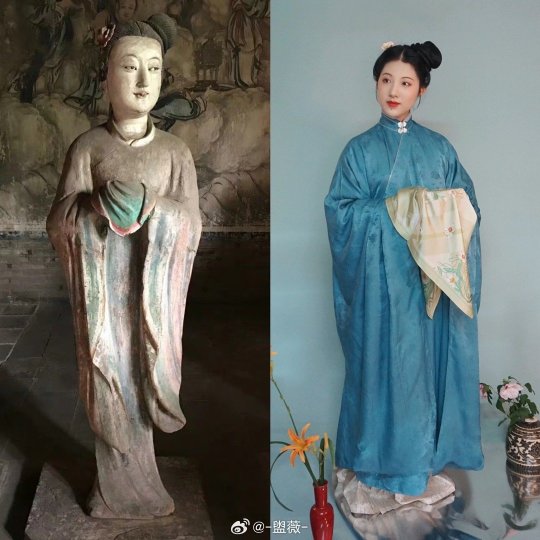



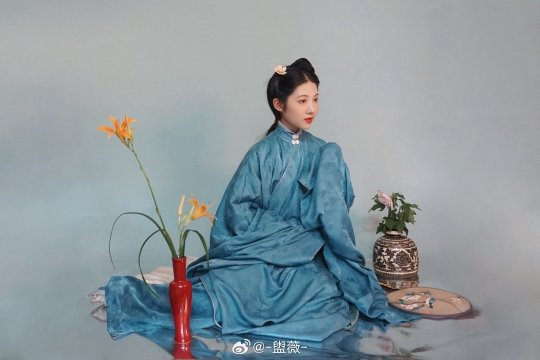



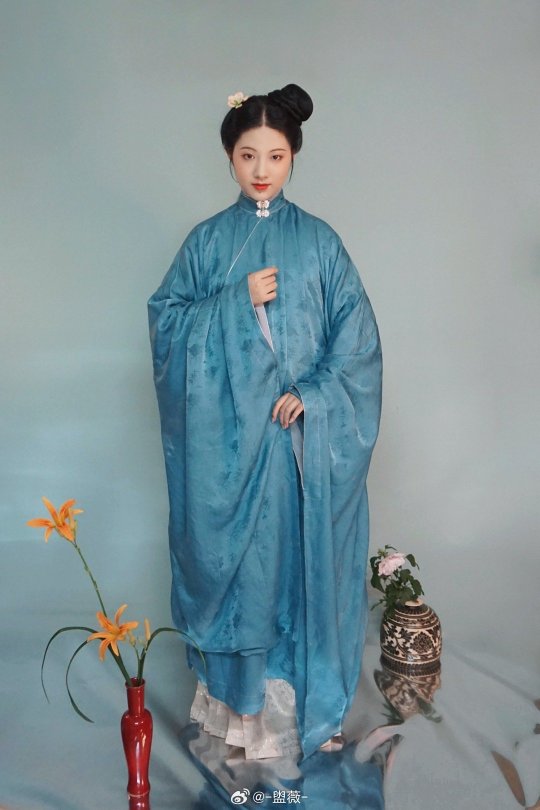




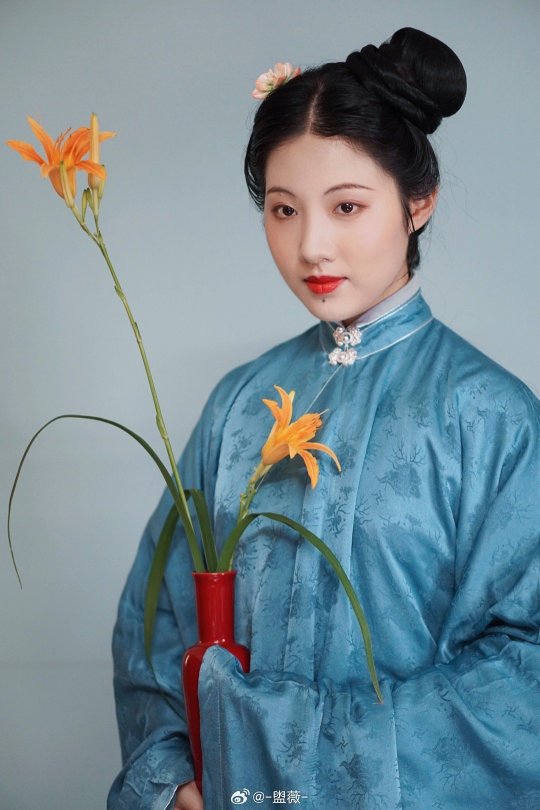
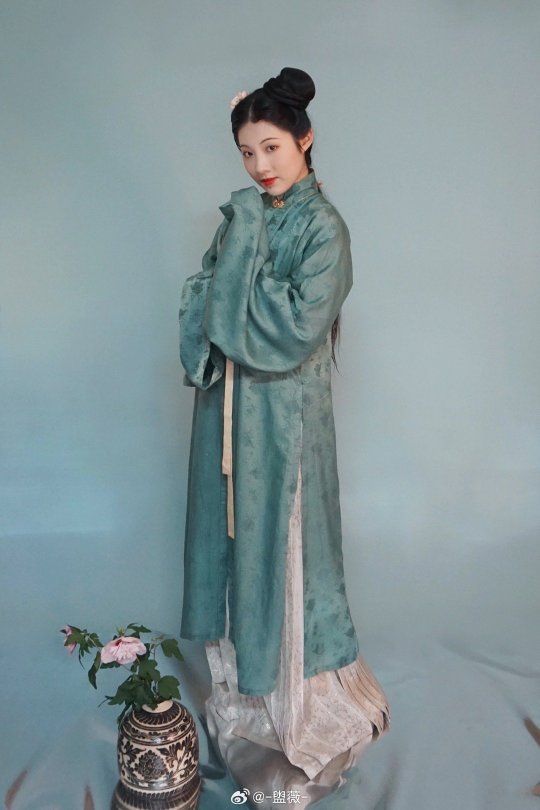
【Historical Reference Artifacts】:
<晋祠水母楼明代彩塑/Jinci Temple ShuiMu Building Ming Dynasty Painted Sculpture>
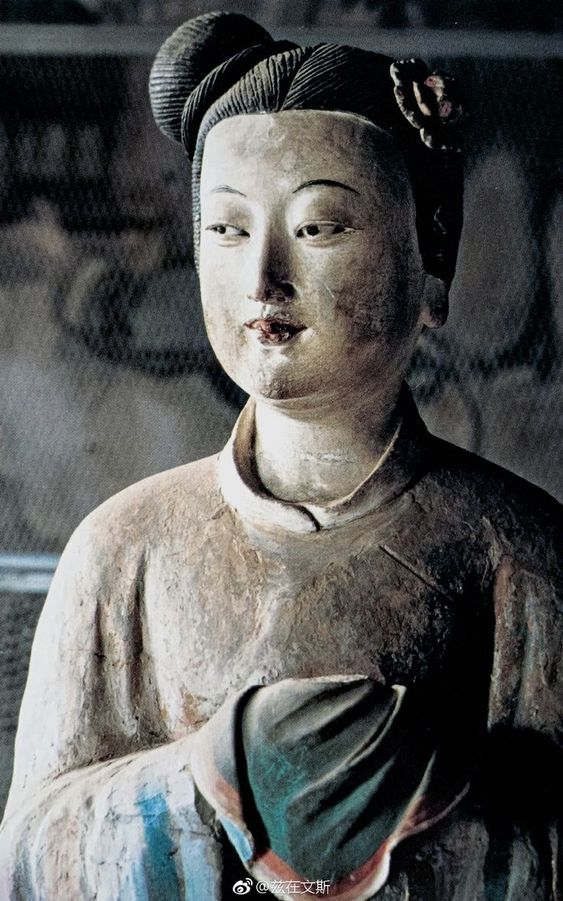





[Hanfu・漢服]Chinese Ming Dynasty (1368-1644 AD)Traditional Clothing Hanfu References to Ming Dynasty Painted Sculpture & Paintings
________________
💃🏻Recreation Work:@-盥薇-
👗 Hanfu:@非常道汉服工作室
🔗Weibo:https://weibo.com/3942003133/N9QtHmz9i
________________
#chinese hanfu#Ming Dynasty (1368-1644 AD)#hanfu#hanfu accessories#hanfu_challenge#chinese traditional clothing#china#chinese#chinese historical fashion#chinese art#hanfu history#hanfu recreation#漢服#汉服#中華風#chinese style#china history#late ming
156 notes
·
View notes
Note
Please can you explain the difference of meaning between hanfu and huafu ? Sorry if you already got the question
Hi, thanks for the question, and sorry for taking ages to reply! (hanfu photo via)
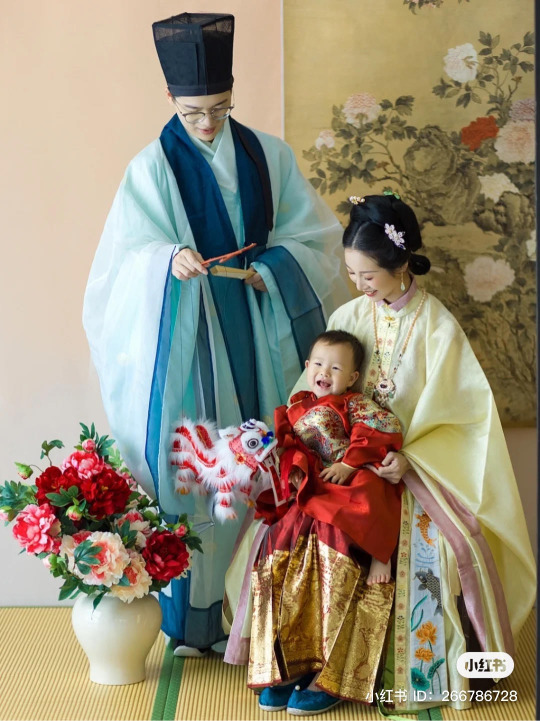
The term “hanfu” (traditional Chinese: 漢服, simplified Chinese: 汉服) literally means “Han clothing”, and refers to the traditional clothing of the Han Chinese people. “Han” (漢/汉) here refers to the Han Chinese ethnic group (not the Han dynasty), and “fu” (服) means “clothing”. As I explained in this post, the modern meaning of “hanfu” is defined by the hanfu revival movement and community. As such, there is a lot of gatekeeping by the community around what is or isn’t hanfu (based on historical circumstances, cultural influences, tailoring & construction, etc). This isn’t a bad thing - in fact, I think gatekeeping to a certain extent is helpful and necessary when it comes to reviving and defining historical/traditional clothing. However, this also led to the need for a similarly short, catchy term that would include all Chinese clothing that didn’t fit the modern definition of hanfu -- enter huafu.
The term “huafu” (traditional Chinese: 華服, simplified Chinese: 华服) as it is used today has a broader definition than hanfu. “Hua” (華/华) refers to the Chinese people (中华民族/zhonghua minzu), and again “fu” (服) means “clothing”. It is an umbrella term for all clothing that is related to Chinese history and/or culture. Thus all hanfu is huafu, but not all huafu is hanfu. Below are examples of Chinese clothing that are generally not considered hanfu by the hanfu community for various reasons, but are considered huafu:
1. Most fashions that originated during the Qing dynasty (1644–1911), especially late Qing, including the Qing aoqun & aoku for women, and the Qing changshan and magua for men. I wrote about whether Qing dynasty clothing can be considered hanfu here. Tangzhuang, which is an updated form of the Qing magua popularized in 2001, can also fit into this category. Below - garments in the style of Han women’s clothing during the Qing dynasty (清汉女装) from 秦綿衣莊 (1, 2).
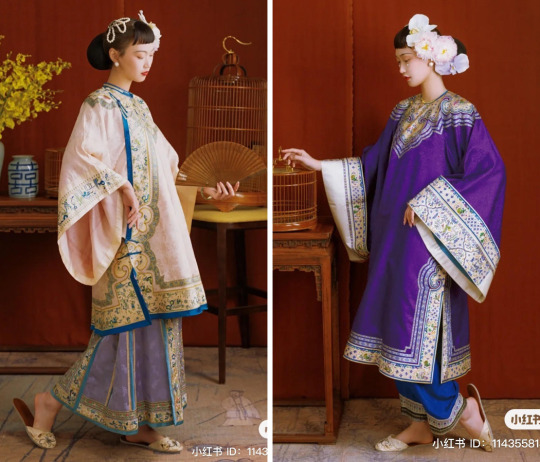
2. Fashions that originated during the Republican era/minguo (1912-1949), including the minguo aoqun & aoku and qipao/cheongsam for women, and the minguo changshan for men (the male equivalent of the women’s qipao). I wrote about why qipao isn’t considered hanfu here. Below - minguo aoqun (left) & qipao (right) from 嬉姷.

Below - Xiangsheng (crosstalk) performers Zhang Yunlei (left) & Guo Qilin (right) in minguo-style men’s changshan (x). Changshan is also known as changpao and dagua.
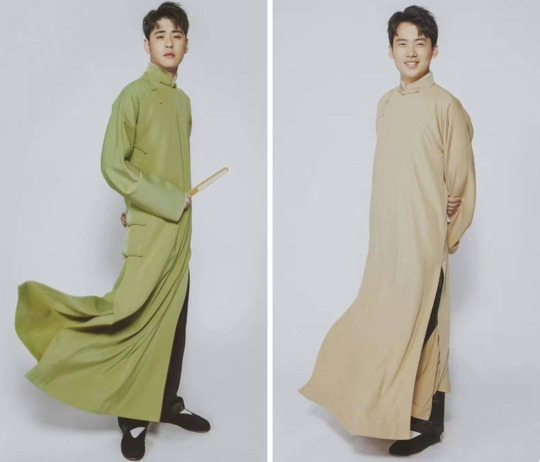
3. Qungua/裙褂 and xiuhefu/秀禾服, two types of Chinese wedding garments for brides that are commonly worn today. Qungua originated in the 18th century during the Qing dynasty, and xiuhefu is a modern recreation of Qing wedding dress popularized in 2001 (x). Below - left: qungua (x), right: xiuhefu (x).
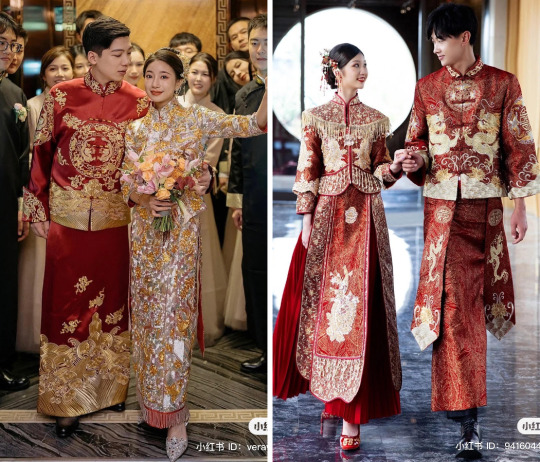
4. Modified hanfu (改良汉服/gailiang hanfu) and hanyuansu/汉元素 (hanfu-inspired fashion), which do not fit in the orthodox view of hanfu. Hanfu mixed with sartorial elements of other cultures also fit into this category (e.g. hanfu lolita). From the very start of the hanfu movement, there’s been debate between hanfu “traditionalists” and “reformists”, with most members being somewhere in the middle, and this discussion continues today. Below - hanyuansu outfits from 川黛 (left) and 远山乔 (right).

5. Performance costumes, such as Chinese opera costumes (戏服/xifu) and Chinese dance costumes. These costumes may or may not be considered hanfu depending on the specific style. Dance costumes, in particular, may have non-traditional alterations to make the garment easier to dance in. Dunhuang-style feitian (apsara) costumes, which I wrote about here, can also fit into this category. Below - left: Chinese opera costume (x), right: Chinese dance costume (x).
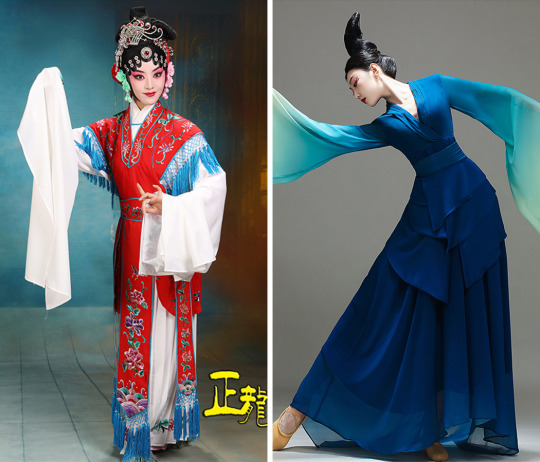
6. Period drama costumes and fantasy costumes in popular media (live-action & animation, games, etc.), commonly referred to as guzhuang/古装 (lit. “ancient costumes”). Chinese period drama costumes are of course based on hanfu, and may be considered hanfu if they are historically accurate enough. However, as I wrote about here, a lot of the time there are stylistic inaccuracies (some accidental, some intentional) that have become popularized and standardized over time (though this does seem to be improving in recent years). This is especially prevalent in the wuxia and xianxia genres. Similarly, animated shows & games often have characters dressed in “fantasy hanfu” that are essentially hanfu with stylistic modifications. Below - left: Princess Taiping in historical cdrama 大明宫���/Palace of Desire (x), right: Wei Wuxian and Lan Wangji in wuxia/xianxia cdrama 陈情令/The Untamed (x).

7. Any clothing in general that purposefully utilizes Chinese style elements (embroidery, fabrics, patterns, motifs, etc). Chinese fashion brand Heaven Gaia is a well-known example of this. Below - Chinese-inspired designs by Heaven Gaia (x).
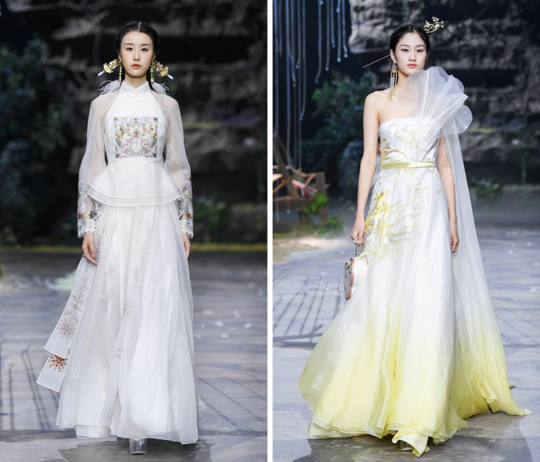
8. Technically, the clothing of China’s ethnic minorities also fit under the broad definition of huafu, but it’s rarely ever used in this way.
From personal observation, the term “huafu” is mainly used in the following situations:
1. Some large-scale events to promote Chinese clothing, such as the annual “华服日/Huafu Day”, will use “huafu” in their name for inclusivity.
2. For the same reason as above, Chinese clothing including hanfu will often be referred to as “huafu” on network television programs (ex: variety shows).
3. A few Chinese clothing shops on Taobao use “huafu” in their shop name. Two examples:
明镜华服/Mingjing Huafu - sells hanfu & hanyuansu.
花神妙华服/Huashenmiao Huafu - sells Qing dynasty-style clothing.
With the exception of the above, “huafu” is still very rarely used, especially compared to “hanfu”. It has such a broad definition that it’s just not needed in situations for which a more precise term already exists. However, I do think it’s useful as a short catch-all term for Chinese clothing that isn’t limited to the currently accepted definition of hanfu.
If anyone wants to add on or correct something, please feel free to do so! ^^
Hope this helps!
#happy 2023!#hanfu#huafu#terminology#language#hanfu movement#history#reference#ask#reply#>1000#chinese fashion#chinese culture#china
2K notes
·
View notes
Text
Hi Producer (正好遇见你) Infodump
Disclaimer: I have no idea about the accuracy of the information shared in the drama, I'm merely transcribing for future reference purposes. Proceed with caution!
.
Ep 20-21: Woodblock Printing

"Modern printing technology can print 10000 pictures in an hour. It only takes months to train an operator. With woodblock printing, each block is carved by hand. It takes five years to train a master craftsman. Eight years to replicate 'Along the River in the Qingming Festival'. From planning to finishing, 'The Night Revels of Han Xizai' took 20 years. Though labor-intensive and time consuming, the result is lifelike and cannot be done by machines."



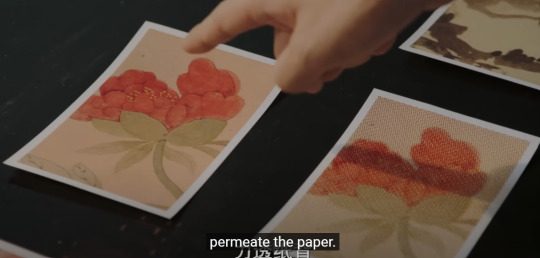
.
Ancient Painting Mounting
Rather than screenshotting I'll link the timestamp as there's a detailed demo segment.
youtube
When the recipe of glue hadn't been modified, moldy glue had a high rate of causing cancer. Therefore, many professional framers were diagnosed with occupational hazards like cancer.
.
Traditional Chinese watermark printing
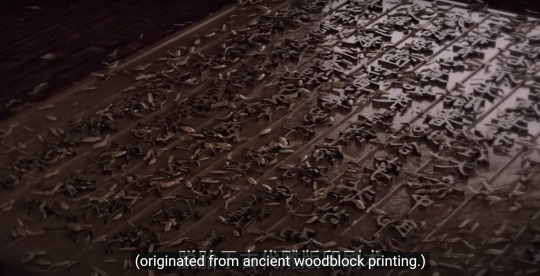
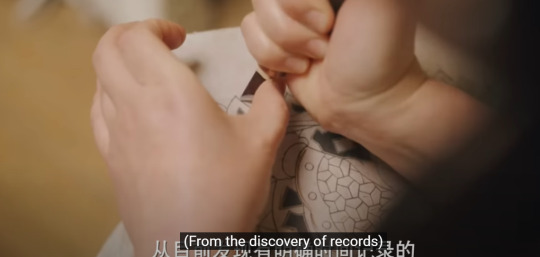
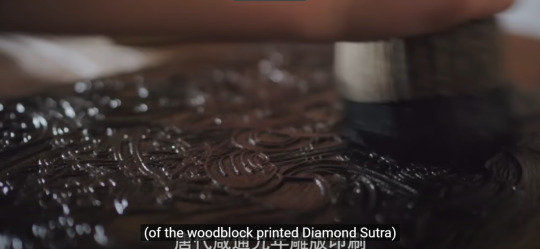
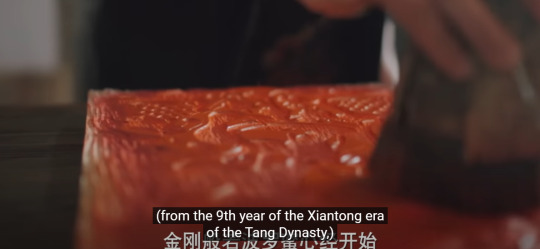

Slowly adapted to the palace, it went from religious uses to secularity.



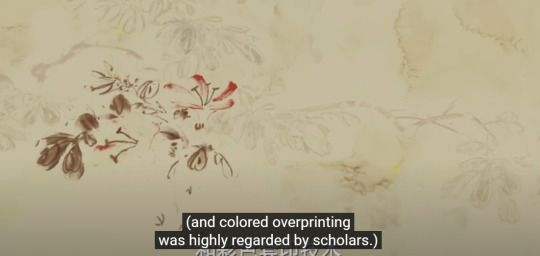
Shouhuazhai uses the technique of assembled block gonghua prints as foundation and combined it with painting, carving and printing to recreate many renowned paintings.
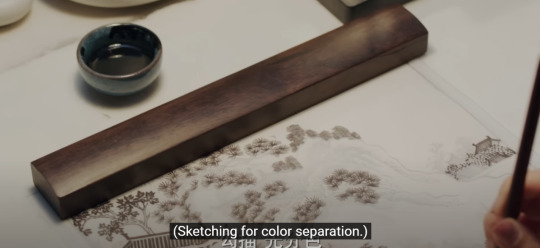


"The number of color schemes will decide how many blocks are needed. During the sketching process, a celluloid block is used as a trace cover for the original work. A very thin sheet of yanpi paper is put on top of the already sketched celluloid block for second-time sketching.
Edge cutting of Block carving is the second step of the technique. It is to paste the sketched yanpi paper on the woodblock for carving.



Brush printing is the last step of this technique. After the carving of blocks is complete, the carvings are traced into pictures. The paper, ink, and colors used in printing must be the same as the original work. The ratio of paint, water, and glue is very important. To have the same degree of saturation and shades as the original work, they usually have to go through countless trials.
To comprehensively recreate ancient paintings, the meaning and spirit of the original painting must be captured. This requires more than the honing of skills.
Due to the temperature and humidity, old paintings and replicas must be handled with great care. When the paintings are too big the connecting point will easily split. This step is called "shang qiang," meaning putting it on the wall. "
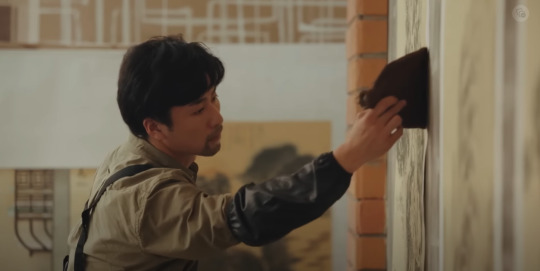

.
Emperor Yongzheng's Twelve Beauties
The drama takes this set of famous paintings as a subject and weaves an elaborate story about how they are based on Emperor Yongzheng's beloved Imperial Consort Dunsu of the Nian family (yes, Hua Fei from Zhenhuan Zhuan/Empresses in the Palace), how she had these likenesses done while sick and in seclusion, to reassure the emperor that she's healthy and happy. She has the original paintings "edited" and replicated as in drawn-over to hide the stains of her blood splattering on one spot from a coughing fit, and has her expression fixed to look smiley etc. This is highly likely pure fiction, from what I've gathered the details about the models of these 12 panels are unknown.
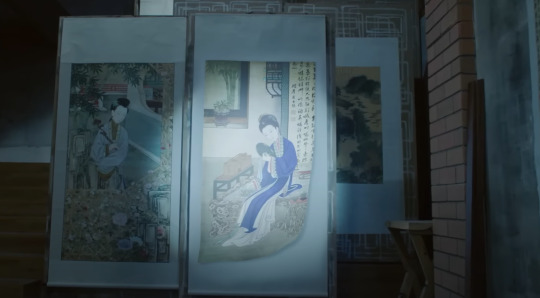
Also, additional meta: The drama did a great job recreating one of those 12 looks, but they made it seem like Lady Nian donned this hair just to pose for this picture, that her regular hair is with a Liangbatou.
In her normal getup in the poster and flashback scene she seems to be wearing a Changshan and a skirt, for the painting she's wearing a pifeng over what seems to be a Changshan tucked under the skirt.
Ref:
This is really nice because this is what the Han noblewomen wore in the era (Manchu women wore a single layer floor length robe with no raised collars, and hair in braided buns), and Lady Nian is Han. But the hair puzzles me. From what I heard Liangbatou is a Manchu-exclusive hairstyle, and ofc a million Qing harem drama predecessors didn't give a damn about mishmashing the stylings disregarding the era and ethnicities, BUT this drama already had the right hair done! Why change it back to something from the future and something she wouldn't wear regardless the time?
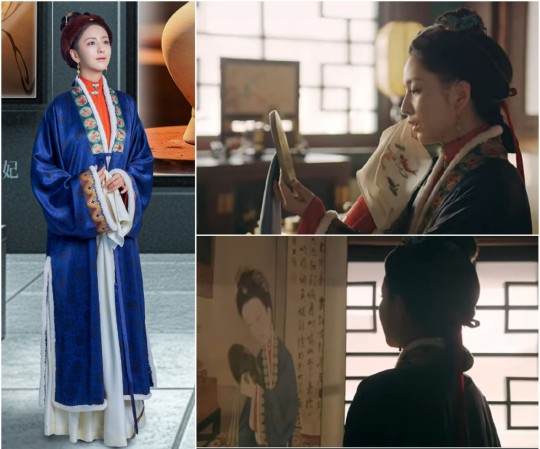
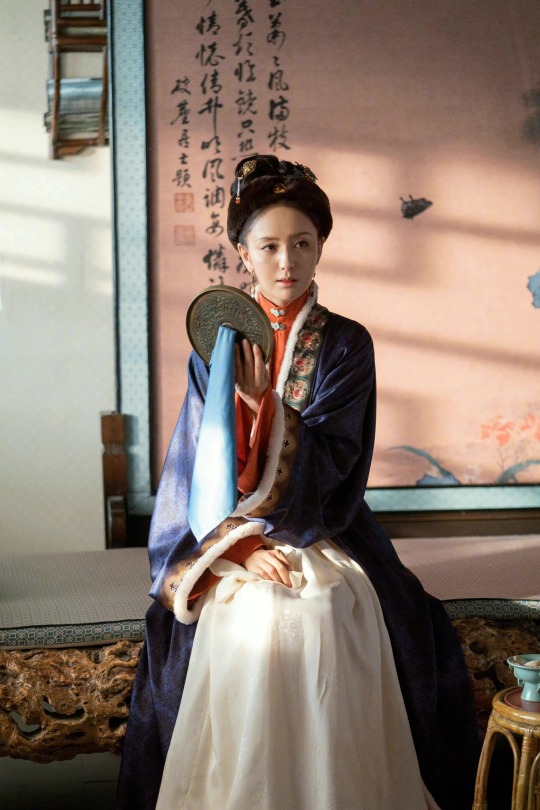

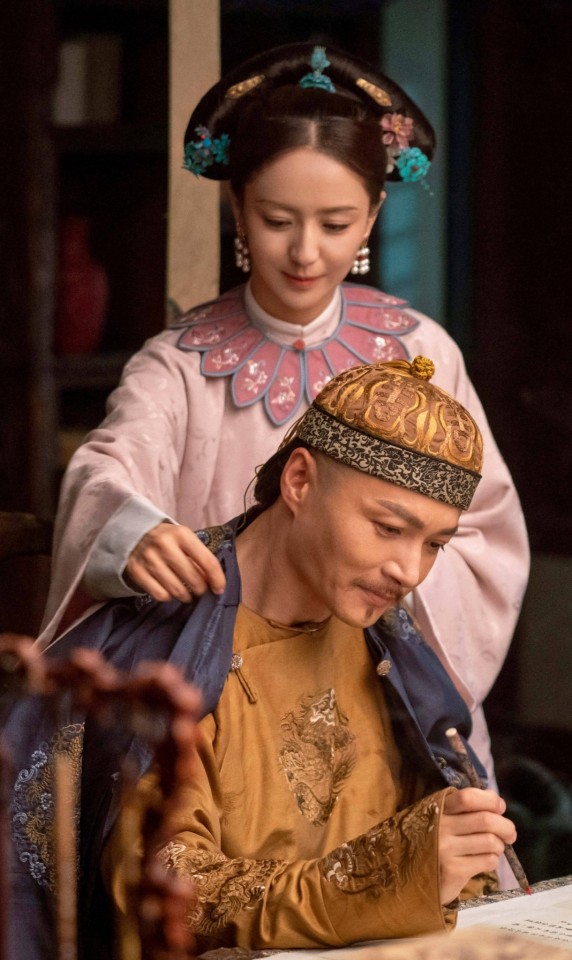
More straight-to-the-point documentary segment about what woodblock printing is about from 34:12 onwards here.
.
More Hi Producer posts
#cdrama#chinese drama#chinese history#ming dynasty#qing dynasty#woodblock printing#chinese paintings#hi producer#正好遇见你
2 notes
·
View notes
Text
2022 Creator’s Self-Love Extravaganza
Rules: It’s time to love yourselves! Choose your 5 favorite works (fics, art, edits, etc.) you’ve created this year and link them below to reflect on the amazing things you’ve brought into the world in 2022. If you don’t have five published works, that’s fine! Include ideas/drafts/whatever you like that you’ve worked on/thought about, and talk a little about them instead! Remember, this is all about self-love and positive enthusiasm, so fuck the rules if you need to. Have fun, and tag as many fellow creators as you like so they can share the love!
Tagged by @bubblesthemonsterartist tho I daresay I am fashionably late at this point, more than two weeks into the new year. Did I forget? Maaaaybe. Which brings us right to the main problem;
I barely remember. Like. 2022. At all. Things happened, I’m sure, but it’s as if there’s a fine layer of mist atop my memories, stopping me from really seeing them. Last year wasn’t really very kind to me. For every up, three downs followed, and between two failed surgeries, a bout of covid, and then whatever the hell kind of flare happened in the autumn… yeah. Idek. It is what it is.
As such, I can’t really comment on my art as like, a whole process, this year. It just existed in the ‘now’, which is presently the ‘then’. I know I beat my submission record from last year, but it felt like a meaningless victory. Despite everything, I can feel it in my hand now, when I draw, that some progress has been made. Subconsciously perhaps, but it’s there.
Onto the ranking then! (I just had to pull up the archive cuz fuck if I remember what I posted, and when)
1.
*deep sigh* we all saw this coming, didn’t we? As much as I love, I curse this image, for in hindsight it felt as if all my creative energy for the entire damned year went into this one piece! Like how dare! But yes it is one of my best redraws ever, and more so than the characters, I feel like I added to the background something even better than the original. There, I said it.
2.
Omigod this entire thiiiiiing. Were it not for the redraw, this would be the top spot. I can’t explain, so many ideas are left in the brain for countless hours, days, months, YEARS. This was two years in the making, and never before did I manage to recreate something that had the exact same vibe as it looked in my imagination. Especially because I’m not a comic creator, hashtag compulsive disclaimer lol. Also while I was drawing it, seeing people go from “hmmm what’s this?” to “wait is that-?” and then “ooooooh it is the lead-up to The Thing” was priceless.
3.
A last-second outlier comes in third. I admit to making this in a hurry, just to have something really nice to show for december (a month which is usually a highly productive month to me, but 2022 didn’t let me have that either) and as such, since I was struggling, both with a deadline, and a lack of real inspiration, I feel like. I managed to improve, somehow. Call it magic, but this looks noticeably different to many of my other colored pieces.
4.
To be perfectly honest, this was a sketch. People might not think it one, for it has details, a color scheme, and even effects - but at the time I posted it, this was just a colorized sketch in my mind. Tumblr disagreed. And I was left in awe watching this first get reblogged within the fandom, then beyond, then go through a hanfu appreciation blog, and finally reblogged with a truly tender chinese poem attached that said person felt gave them the same vibe as what I had drawn. The people spoke, and I was both awed and humbled, and I learned a valuable lesson in humanity relating to art.
5.
Unlike the others, this was a conscious attempt at something different. I can’t really say why it should go in the fifth spot, but it does; i spent a lot more time than usual on composition, colors, and most importantly, mood setting. And putting characters so solidly into the middleground can be a challenge in itself for me, as I run the risk of getting storybook-ish. Which would’ve been disastrous for a scene like this.
Honorable mention;
Coping through art. @bubblesthemonsterartist has the honor of inspiring this, or like, being the one to “give me” the go-ahead to channel some of my experiences through the characters and story-telling in general. Back pain is something I know all too well, and it was well and truly therapeutic. I also got to do another test of “can I retell this scene, even if I switch part of the cast and premise?” And it seems I did. I will always remember @what-plant-metaphor-am-i ‘s tag; ‘# I feel like I just watched an entire episode XD’ <- never has my inner storyteller been more validated.
There, that wasn’t so hard! Sometimes I’m really thankful for the internet, and timestamps, and kicking my memory back into gear etc… anyway, since I am so woefully late to the party, I’m not tagging anyone specifically; if you wanna be fashionably late too, you know who tagged you~
12 notes
·
View notes